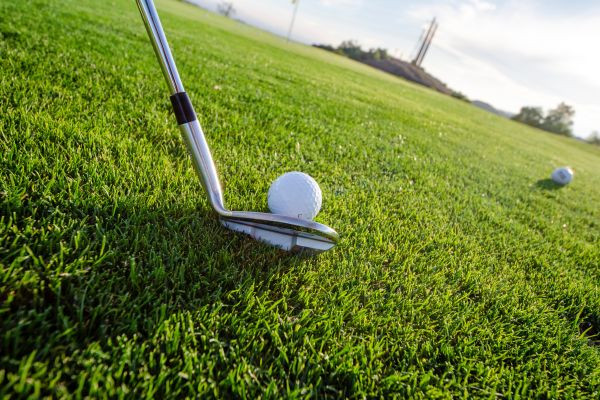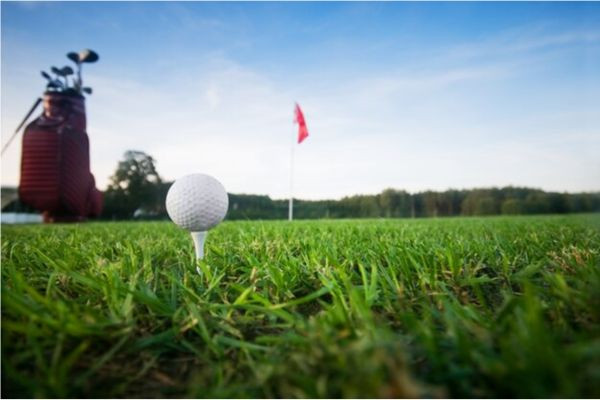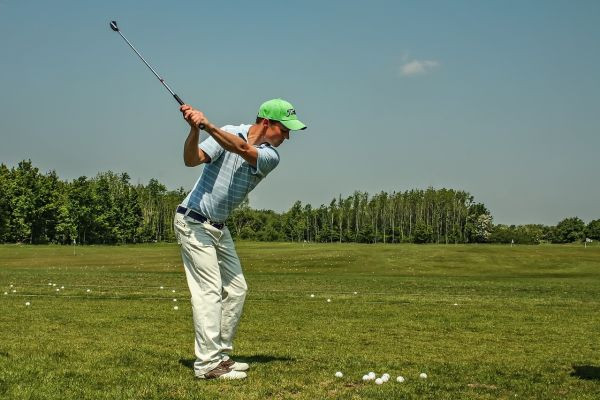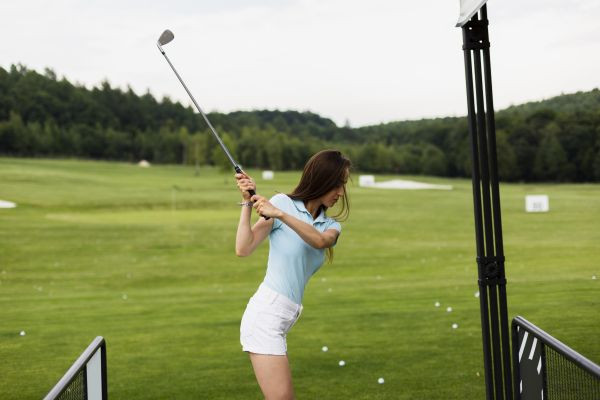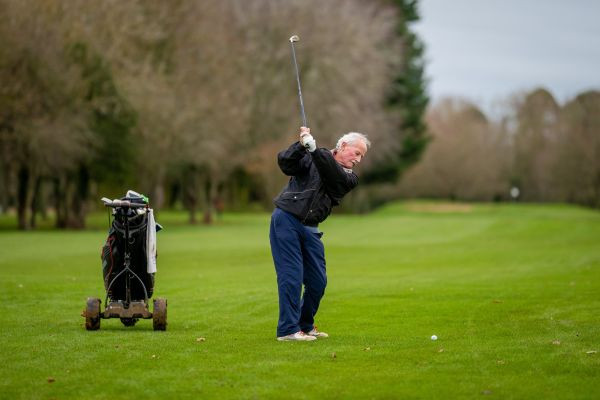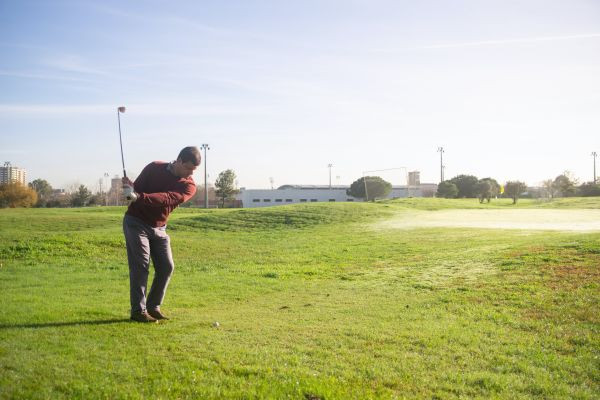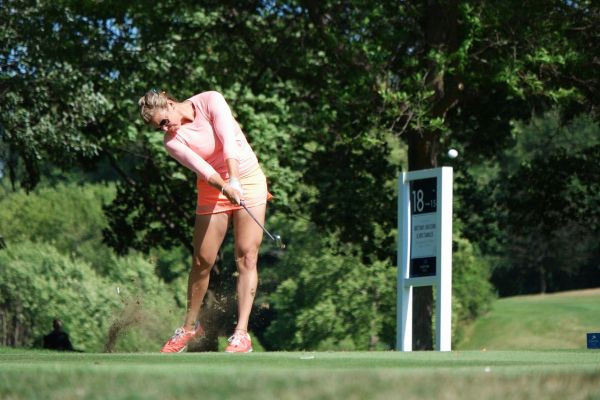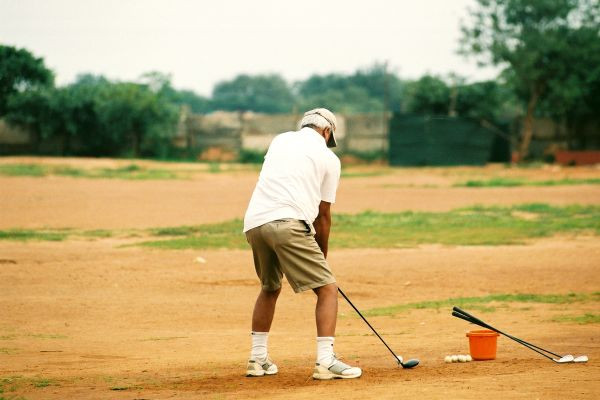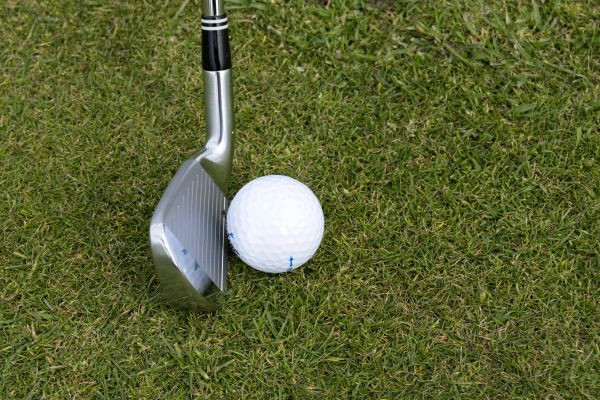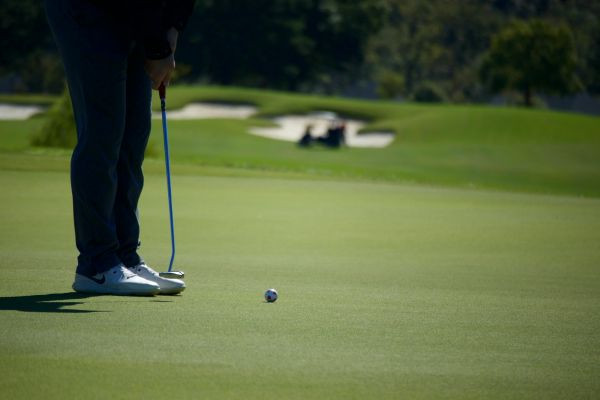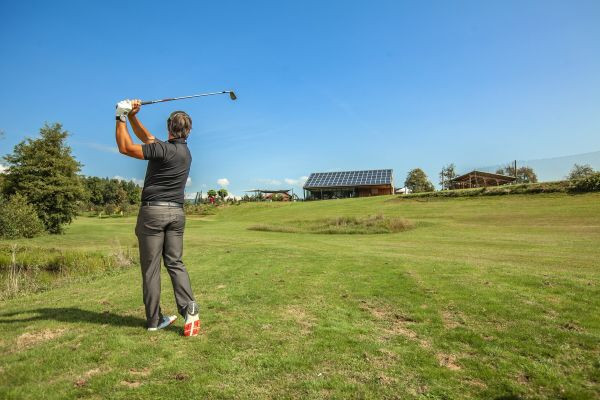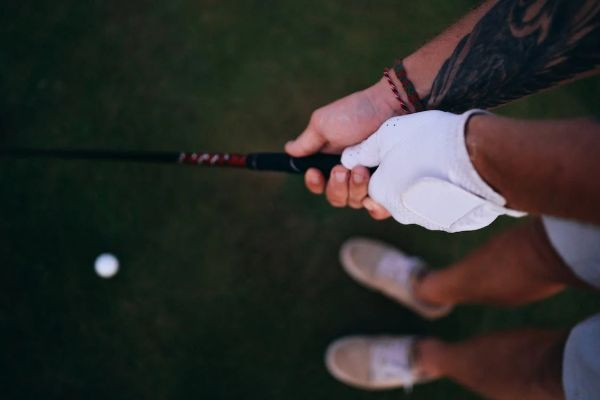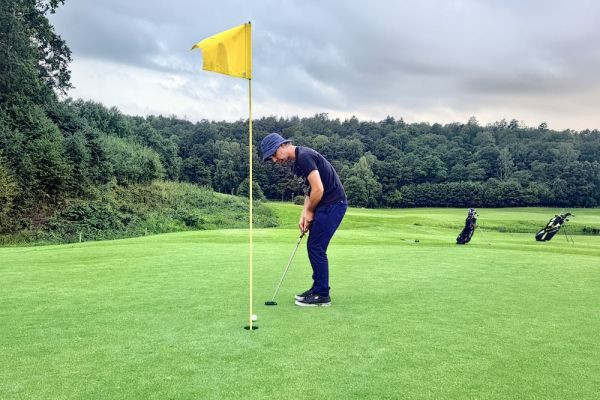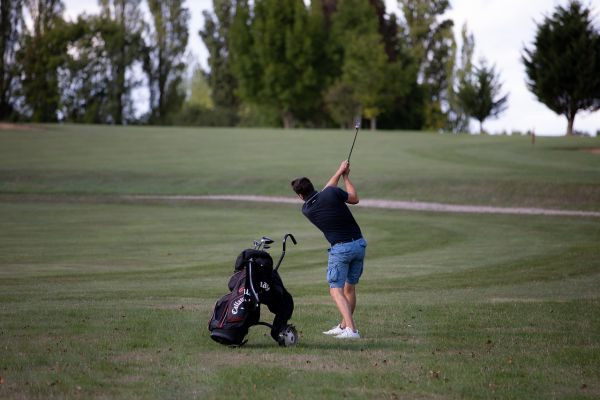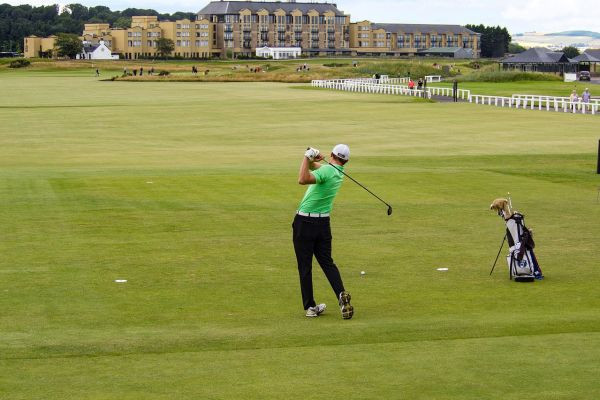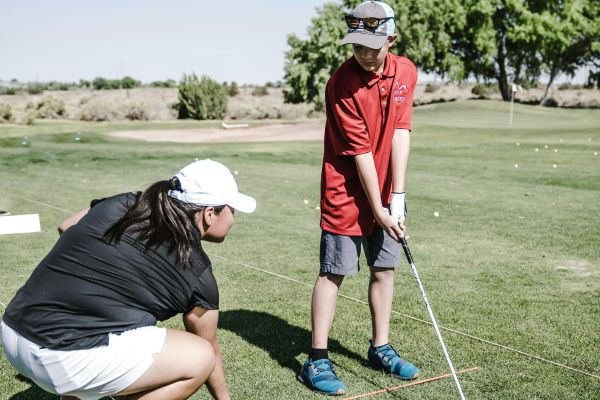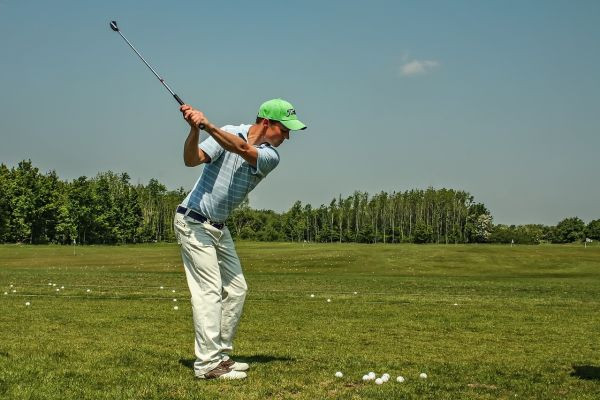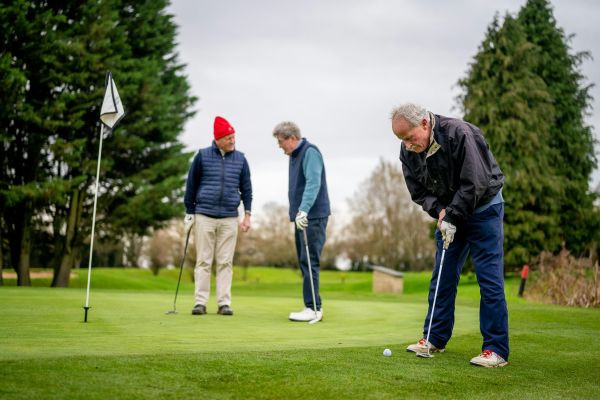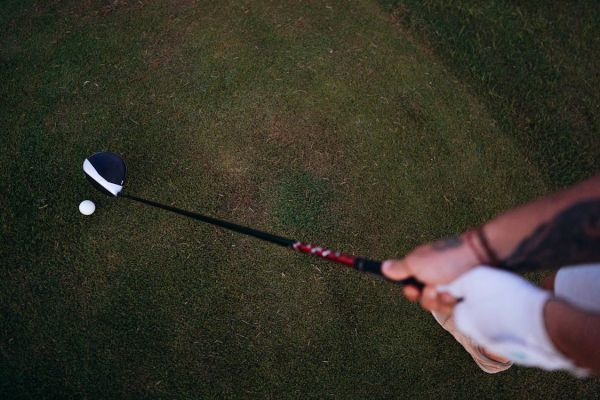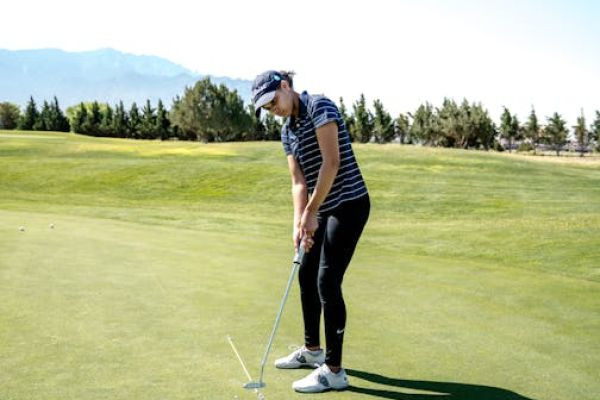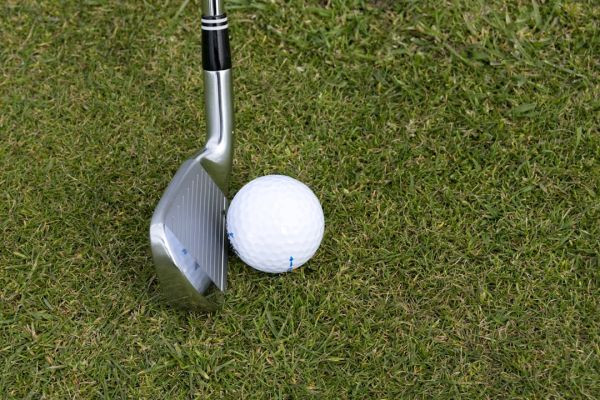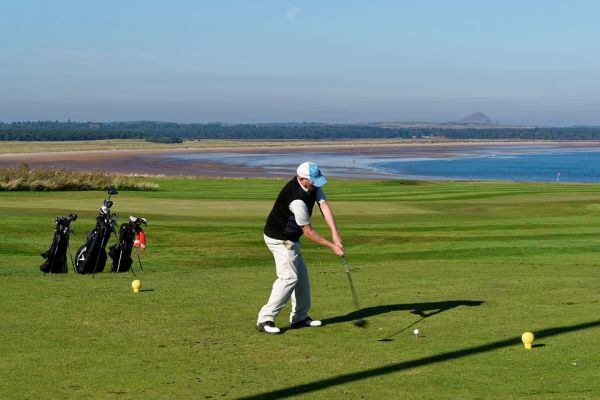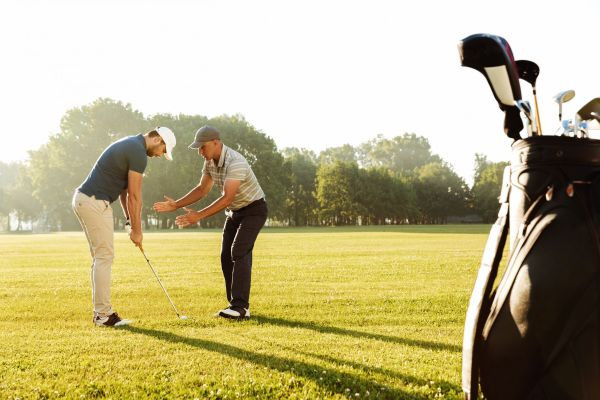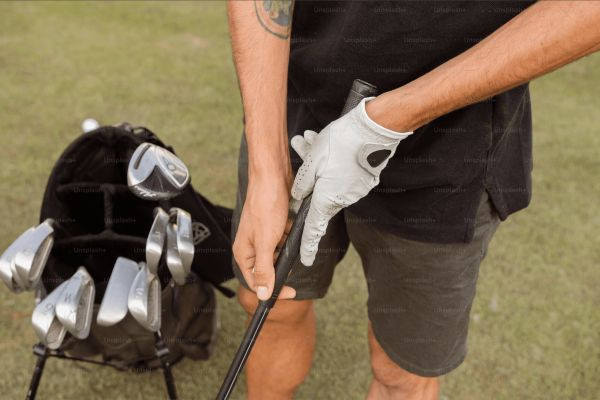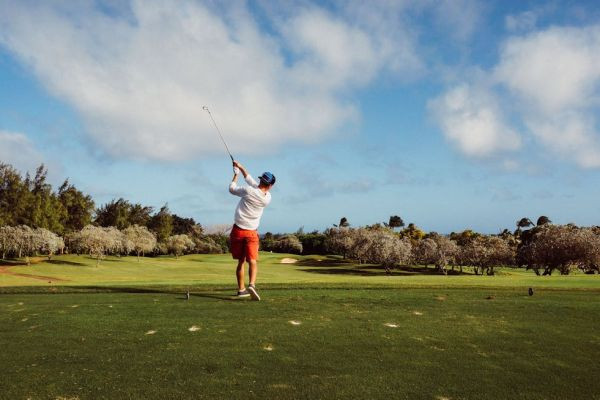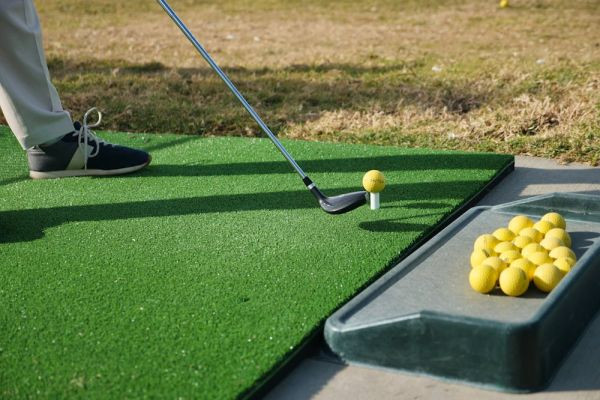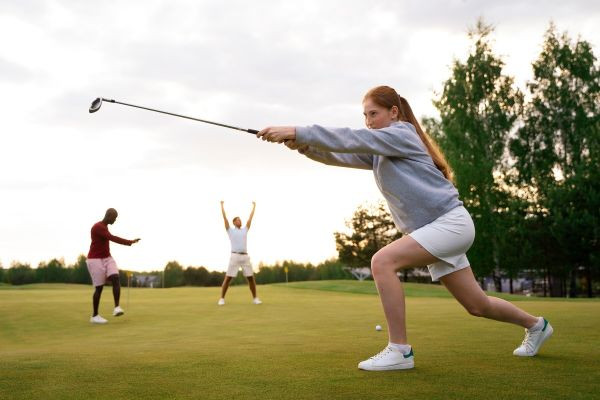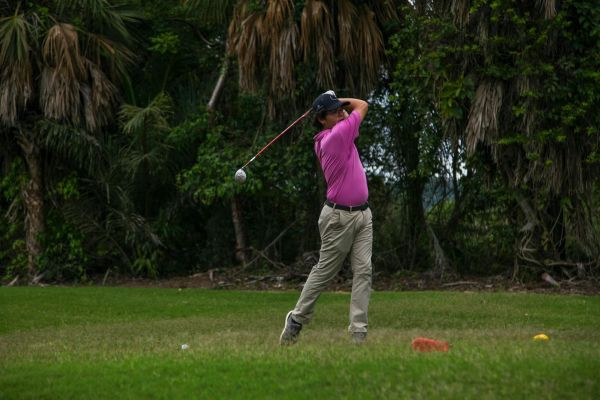Correcting Your Over-the-Top Golf Swing
Let's break down what an over-the-top golf swing really means. Imagine you're set up to hit the ball, you're feeling good and you start your swing. But instead of the club following a smooth path dire..
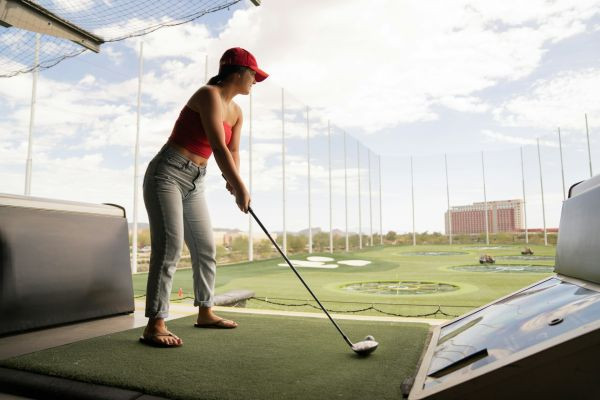
Let's break down what an over-the-top golf swing really means. Imagine you're set up to hit the ball, you're feeling good and you start your swing. But instead of the club following a smooth path directly to the ball, the club sort of veers off, swinging outward and then cutting across the ball as you hit it. This is what we call an "over-the-top" swing because the club comes over the ideal swing path and then goes across the top of it during your downswing.
This wonky movement usually sends the ball off to the right if you're right-handed or to the left if you're left-handed and it's called a "slice." It's like when you try to throw a frisbee and it veers off sharply instead of going straight; pretty annoying, right?
Common Symptoms of an Over-the-Top Swing
Now, how do you know if you’re doing this? Well, if you often find your golf balls slicing off to the side or if your shots are losing distance (like, they're just not going as far as you think they should), there’s a good chance you might have this over-the-top action happening.
Another clue is feeling off-balance during your swing. It’s like when you’re trying to swing but something feels weird and you’re not moving as smoothly as you’d like. This doesn’t just mess up your game and make it less fun but it can actually lead to getting hurt. Because you're not moving naturally, you might end up putting too much strain on certain parts of your body, trying to make up for that odd swing path.
It’s super frustrating, especially when you can't figure out why it's happening or how to fix it. But don't worry, once you know what's going on, you can start fixing it. And I’m here to help you understand that so you can start hitting those balls straighter and further, just like you want to!
The Impact of Over-the-Top on Your Game
So, let’s dive into how this over-the-top swing really messes with your game. Knowing the downsides might just give you the push to sort it out.
Loss of Distance and Accuracy
First up, when your swing path goes off track—like when it’s over-the-top—you’re not hitting the ball as cleanly as you should. It’s like trying to hit a nail with a hammer but instead of hitting it straight on, you’re sort of glancing off the side.
When you don’t hit the golf ball squarely because of the skewed path, you're not going to get the distance you could have if you hit it perfectly head-on. This misalignment seriously cuts down how far your ball travels.
And it’s not just about distance. Your accuracy takes a hit, too. Because the swing sends the ball off at weird angles, aiming becomes a guessing game. This means more balls veering off into the bushes or landing in places where you really didn’t want them to go.
Naturally, this leads to higher scores on your card, because you're taking extra shots just to recover from poor initial hits. And let’s be honest, racking up points in golf isn’t like in other sports—the goal is to keep the score as low as possible.
The Frustration of a Persistent Slice
Now, about the slice—that wicked curve the ball takes because of an over-the-top swing. It's super frustrating, right? You're all set to smash that ball down the fairway but instead, it swoops off to the side like it's got a mind of its own.
This isn’t just a minor nuisance; it can really mess with your enjoyment of the game. You might find yourself dreading your next shot or feeling embarrassed if you're playing with friends or in a competition.
But here’s the kicker: once you start correcting your swing path, not only do you see the ball flying straighter but the game becomes more fun. You feel more in control, like you actually have a say in where that ball is going to land.
And when your shots start doing what you want them to, golf becomes a whole lot more rewarding. Plus, you'll spend less time tromping through the rough looking for stray balls, which is always a bonus.
Fundamental Causes of Over-the-Top Swings
Getting to the bottom of why over-the-top swings happen is super important if you want to fix them. Let’s break down the main reasons this might be messing up your golf game.
Poor Weight Shift and Balance
First off, think about how you shift your weight during a swing. If you don’t do this part right, it can throw off your whole move. Imagine standing up and leaning way too far forward as you try to walk. You’d probably stumble, right? It's kind of similar with golf.
When you swing, if your weight isn't shifting smoothly from your back foot to your front foot, your upper body has to do weird adjustments to make up for it. This usually leads to swinging the club over the top instead of in a nice, straight line.
Getting your weight shift smooth and balanced isn't just about not falling over; it’s crucial for keeping the swing path straight and powerful.
Incorrect Club Path and Alignment
Now, about the way you line up your club: If it’s not set up just right when you start your swing, things can go sideways—literally. It's like setting up a shot in a pool or billiards. If the cue isn’t aimed right, the ball won’t go where you want it to.
In golf, if your club isn't aligned properly at the top of your swing, it’s super easy to accidentally start your downswing with an over-the-top motion. This messes up the direction and the power of your shot.
That’s why making sure your club is perfectly aligned at the start is key to nailing that inside-out path that sends the ball flying straight toward your target.
Suboptimal Wrist and Arm Positions
Lastly, let’s talk about what your wrists and arms are up to. If they're in the wrong position when you reach the top of your swing, it's like setting up a row of dominos incorrectly—they won’t fall the way you want.
In golf, if your wrists and arms aren't angled or bent right, they can force the club to swing over the top instead of along the proper path. Making sure your wrists and arms are positioned correctly can really change the game.
It's like getting the angles right in a game of darts; hit the angle right and you’ll score big.
Step-by-Step Fixes for Over-the-Top Swings
Source:https://unsplash.com/photos/woman-holding-golf-club-during-daytime-7YnghE7AD7o
Now that we know why over-the-top swings happen, let's dig into some hands-on fixes that you can try out.
Adjusting Grip and Stance
First things first, getting your grip and stance sorted out is huge. It’s like setting the foundation for your entire swing. If these basics aren’t in place, everything else can go haywire pretty quickly.
The Right Grip for Preventing Over-the-Top
So, let’s talk about your grip. You want to go for what’s called a "neutral grip." This doesn’t mean gripping your club like you're trying to strangle it. Instead, you want your hands to hold the club firmly but gently—think about holding a bird without squishing it but also making sure it doesn't fly away. This type of grip helps you control the club better without locking up your wrists and arms. It keeps everything more balanced and free to move, which is super important for a smooth swing that hits the ball just right.
Stance Adjustments to Enhance Swing Path
Next up is your stance. Getting this right helps a ton because it sets up where your swing is going to go. You want your feet, hips and shoulders to be lined up parallel to where you want the ball to go—like train tracks leading to your target. This alignment doesn't just help with hitting the ball straighter; it also stops you from swinging over-the-top.
When you set up this way, your body is in the best position to swing the club along a path that promotes an inside-to-out swing instead of an over-the-top one. Just by standing correctly, you can really change the way your club moves and make your swings way more effective.
Drills to Improve Weight Distribution
Let’s get into some drills that can really help sort out your weight shifting issues. These drills are all about making sure your weight moves correctly throughout your swing. It’s pretty key because how you shift your weight can make or break how well you hit that golf ball.
The Footwork Drill
First up, we’ve got the Footwork Drill. This one is super straightforward but really effective. What you do is focus on moving your weight from your back foot to your front foot while you swing. It might sound like what you’re already doing but paying extra attention to it can make a huge difference.
When you practice this, try to feel the shift of weight as you move from one foot to the other. This isn’t just about moving; it’s about feeling the movement. It helps you get the timing right and makes the motion more natural. The goal here is to get so good at this that you don’t even have to think about it when you’re playing for real.
The Chair Drill for Hip Movement
Next is the Chair Drill and this one’s about getting your hips to move just right. You’ll need a chair for this (obviously). Place it just slightly behind where your hips will be when you do your backswing. This setup helps prevent you from rotating your hips too much on the backswing.
When you swing back, you should just barely miss the chair with your hips. Then, as you come down into the downswing, focus on turning your hips properly. The chair acts as a physical reminder of where not to go and it guides your hips into the right movement. This way, you’re encouraging your hips to turn just enough, which is crucial for a powerful and controlled swing.
Techniques to Optimize Wrist and Arm Positions
Getting your wrists and arms right is super important if you want to avoid that dreaded over-the-top swing. Let's go over a couple of techniques that can help you keep everything in the right position throughout your swing.
The Towel Drill
First up, we have the Towel Drill. This is a pretty cool trick to make sure your arms and your body are working together as a team. Here's what you do: take a regular towel and tuck it under both arms while you hold your golf club. What this does is it kinda locks your arms to your body a bit.
When you swing with the towel tucked in, you have to keep your arms close to your body or the towel will fall out. This helps you maintain a nice, tight swing path and prevents your arms from flying all over the place, which is often what happens with an over-the-top swing. The idea is to keep everything moving in unison and this drill makes you really aware of how your arms and body should move together.
Wrist Flexion Exercises
Next, we're talking about wrist flexion exercises. These are all about getting your wrists into the right position so that you can keep the clubface closed or square rather than letting it open up. When the clubface opens up too much, it's a straight path to swinging over the top and slicing the ball.
For wrist flexion, you can do some simple exercises without even leaving your house. Try this: hold a golf club in front of you with one hand and then deliberately bend your wrist so the club moves towards the ground, then bring it back up. You can also practice this motion as part of your swing, focusing on keeping that wrist flexed a bit as you reach the top of your swing.
By practicing these wrist movements, you help build the muscle memory needed to keep the clubface more closed during your swing. This is crucial because it means you're more likely to hit the ball straight and avoid slicing it off into the trees.
Tips from Professionals
Even after you've got the basics down, there’s always room to level up. That's where advice from top golf instructors can really make a difference. These pros have seen it all and they’ve got some cool tricks to help refine your swing even further.
Insights from Jonathan Yarwood
Jonathan Yarwood is a big name when it comes to golf coaching and one of the key things he talks about is the importance of proper weight shifting. He’s not just talking about moving your weight from one foot to another; he’s got a specific way he likes to see it done to keep your swings smooth and powerful.
Yarwood recommends practicing footwork patterns that help you balance better. It’s about making sure that as you shift your weight, you're doing it in a way that keeps your body stable and your swing fluid. He suggests exercises like stepping drills, where you practice stepping forward smoothly as you swing, to get the feel of transferring weight without throwing your balance off.
Insights from by Nick Clearwater
Nick Clearwater, another well-respected golf coach, focuses on practical tweaks that can have a big impact. One of his favorite tips is to use visual aids to improve your swing path. He suggests placing objects like a headcover or a small cone near your setup area. These aren't just random placements; they’re strategically put there to create a physical barrier that guides your swing in the right direction.
For example, by placing an object just outside your usual swing path, you’re forced to adjust slightly to avoid hitting it. This subtle adjustment can help train you to avoid over-the-top swings without needing to think too hard about it. It's a simple method but super effective at reinforcing the kind of muscle memory that leads to better, more consistent swings.
Conclusion
Correcting an over-the-top golf swing definitely takes some patience and practice. It’s not something that you’ll fix overnight but with a solid understanding of what causes it and how to address those issues, you're well on your way. By following the exercises and tips we’ve talked about—from basic drills to pro-level tweaks—you can really transform your game.
This kind of practice not only reduces those frustrating slices but also makes your whole golfing experience a lot more enjoyable. You'll be hitting cleaner, straighter shots and feeling a whole lot more confident on the course.
Frequently Asked questions (FAQs)
What is the quickest fix for an over-the-top golf swing?
The quickest fix is often adjusting your grip and stance to ensure they’re promoting the correct swing path. Also, focusing on slowing down your swing to maintain control can yield immediate improvements.
Can over-the-top swings be corrected at any age?
Absolutely! It’s never too late to improve your swing technique with the right practice. Golf is a game of lifelong improvement and enjoyment.
What are the signs that I'm successfully correcting my over-the-top swing?
Look for more consistent flight paths in your shots and less slicing. You may also notice increased distance and accuracy with your drives.
How does proper equipment affect my ability to fix an over-the-top swing?
Using the right clubs, fitted to your specific needs, can significantly help in aligning your swing path correctly. Proper equipment can also reduce the physical strain on your body during play.
Are there specific exercises to strengthen muscles for a better golf swing?
Yes, exercises that build core and leg strength can improve stability and power in your swing. Additionally, flexibility exercises can enhance your range of motion and prevent injuries.




